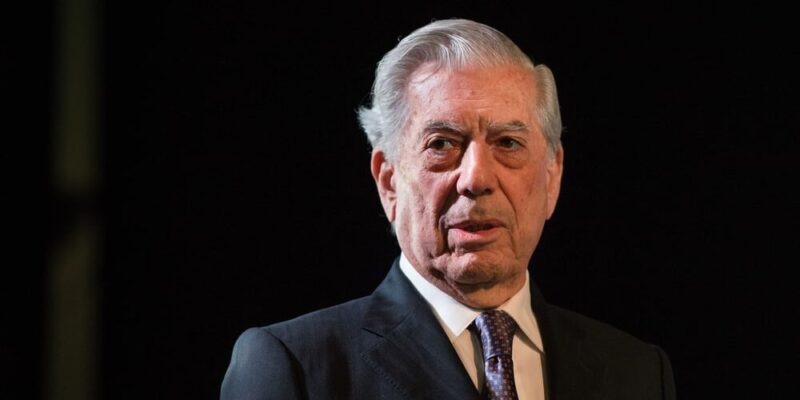We explain what the contemporary novel is, its characteristics and the historical context. Also, the difference with the classic novel and more .
What is a contemporary novel?
A contemporary novel is a literary work written in prose that relates an action in order to provoke a reaction in the reader. It is a narrative subgenre that is more extensive than the story and that presents a complex plot in which several characters intervene, at a certain time and place.The contemporary novel was one of the literary styles that emerged from the Second World War of 1939, as a consequence of political changes, social movements and economic crises. This type of genre was an escape route from such an oppressive and uncertain reality, used by authors and readers as a means to release feelings.
Characteristics of the contemporary novel
 The contemporary novel is characterized by:
The contemporary novel is characterized by:
- Having arisen in a context of wars and popular uprisings that unleashed great social repression. In turn, great technological and scientific inventions were created at that time, such as the radio and the automobile.
- To use the questioning of the use of reason as the only way to explain the world and the alienated individual in the new industrialized society .
- Use individualistic and subjective theories to understand what science cannot explain.
- Putting emphasis on the subjectivity of the individual and inner search, appealing to the emotions deeper.
- Use plots related to social conflicts , the loneliness of the human being , the existential anguish of the postmodern individual, among others.
- Include anti-hero type characters that break with the parameters of what is expected.
Contemporary novel vs. Classic novel
The contemporary novel is characterized by telling stories based on real events or credible stories , with important characters and with multiple narrators. It uses settings from the current or modern era, so it does not usually include science fiction novels.After the horrors of the wars, people felt that God did not exist, which led the population to a life without meaning. Through their contemporary novels, the writers sought to confront that reality. The human being began to wonder about his subjectivity and the novel was a way of reflecting that inner search through the multiplicity of voices and different approaches .
On the other hand, the classic novels are characterized by having themes that can correspond to any era . They tend to use universal resources that are adapted to a very wide audience of readers, so they become classic or popular stories that remain valid over the years.
Classic novels span several decades of different historical moments and are noted for a unique narrative artistic quality that distinguishes them from other literary works.
Main references of the contemporary novel
 Among the main references of contemporary novels are:
Among the main references of contemporary novels are:
- Camilo José Cela (1916 - 2002) . Spanish novelist and journalist author of works such as: “La familia de Pascual Duarte”, “La colmena” and “Viaje a la Alcarria”.
- Miguel Delibes Setién (1920 - 2010) . Spanish novelist, member of the Royal Spanish Academy, author of works such as: "The heretic", "The shadow of the cypress is elongated" and "The holy innocents".
- Gonzalo Torrente Ballester (1910 - 1999) . Spanish novelist and teacher, author of works such as: "The joys and the shadows", "Javier Mariño" and "Filomeno, despite me".
- Luis Martín Santos (1924 - 1964) . Spanish writer and psychiatrist, author of works such as: “Tiempo de silencio”, “Grana gris” and “Condenada Belleza del mundo”.
- Carlos Fuentes (1928 - 2012) . Mexican writer, author of works such as: “The death of Artemio Cruz”, “Aura” and “The most transparent region”.
- Salvador Novo (1904 - 1974). Mexican writer, poet and essayist, member of the Mexican Academy of Language, author of works such as: "New love", "The statue of salt" and "New Mexican greatness".
- Gabriel García Márquez (1927 - 2014). Colombian writer and journalist, author of works such as: "One Hundred Years of Solitude", "The Colonel has no one to write to him" and "The Autumn of the Patriarch."
- Mario Vargas Llosa (1936 - present) . Peruvian writer, author of works such as: “The city and the dogs”, “Conversation in the Cathedral” and “The green house”.
- Isabel Allende (1942 - present). Chilean writer born in Peru, author of works such as: “La casa de los espíritus”, “De amor y de sombra” and “Paula”.
- Julio Cortázar (1914 - 1984). Argentine writer and translator, author of works such as: "Rayuela", "Historias de cronopios y de famas" and "Bestiary".
- Alejo Carpentier (1904 - 1980). Cuban writer, author of works such as: "The kingdom of this world", "The Century of lights" and "The lost steps".
The above content published at Collaborative Research Group is for informational and educational purposes only and has been developed by referring reliable sources and recommendations from technology experts. We do not have any contact with official entities nor do we intend to replace the information that they emit.
Luke is passionate about fostering student involvement and connection. He studied psychology for his major and likes learning about the past. Luke aims to specialize in artificial intelligence and cybersecurity. .
Leave a reply
Your email address will not be published. Required fields are marked *Recent post

Sport: What Is It, Types, Risks, Features, Characteristics and Examples
September 23, 2021

Dogs: Emergence, Features, Characteristics, Feeding and Breeds
September 24, 2021

Story: Definition, Elements, Structure, Features and Characteristics
September 24, 2021

Essay: Definition, Structure, Features, Characteristics, How to Do It
September 24, 2021
